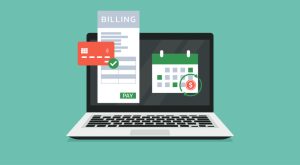 For every business owner, managing taxes is one of the most important parts of running a successful operation. Overpaying taxes can eat into profits, while smart planning can significantly improve your bottom line. The good news? With the right strategies, you can reduce your business tax liability legally and effectively.
For every business owner, managing taxes is one of the most important parts of running a successful operation. Overpaying taxes can eat into profits, while smart planning can significantly improve your bottom line. The good news? With the right strategies, you can reduce your business tax liability legally and effectively.
This guide breaks down the basics of business tax reduction—what it is, why it matters, and how to do it.
Why Business Tax Reduction Matters
Paying taxes is a non-negotiable part of doing business, but how much you pay is often within your control. By leveraging deductions, credits, and smart planning, you can:
- Improve cash flow
- Boost profitability
- Reinvest more into your business
- Avoid costly penalties and audits
The key is understanding your options and taking a proactive approach throughout the year—not just during tax season.
Top Strategies for Reducing Business Taxes
1. Maximize Business Deductions
The IRS allows you to deduct “ordinary and necessary” expenses related to running your business. Some common deductions include:
- Office rent or home office expenses
- Business travel and meals (50% deductible)
- Equipment and software
- Marketing and advertising
- Professional services (legal, accounting, consultants)
- Employee wages and benefits
Keep detailed records and receipts to support your deductions in case of an audit.
2. Leverage Section 179 and Bonus Depreciation
If you purchase equipment or vehicles for your business, you can often deduct the full cost in the year of purchase through Section 179 or bonus depreciation. These incentives can provide huge tax savings, especially for capital-intensive businesses.
3. Hire Strategically
Hiring employees or independent contractors may qualify you for tax credits and deductions. The Work Opportunity Tax Credit (WOTC), for example, rewards businesses that hire veterans, ex-felons, or long-term unemployed workers.
Also, offering tax-advantaged benefits like retirement plans, health insurance, or commuter benefits can reduce your payroll tax burden.
4. Contribute to a Retirement Plan
Setting up a retirement plan—like a SEP IRA, SIMPLE IRA, or Solo 401(k)—not only helps you and your employees save for the future, but also reduces your taxable income. Employer contributions are typically tax-deductible.
5. Choose the Right Business Structure
The way your business is structured (sole proprietorship, LLC, S-corp, C-corp, partnership) can have a major impact on your tax bill. For example:
- S-corporations allow profits (and losses) to pass through to the owner’s personal tax return, avoiding double taxation.
- LLCs offer flexibility—you can elect how you want to be taxed.
- C-corporations may benefit from a flat corporate tax rate, but may also be subject to double taxation unless handled carefully.
Work with a tax professional to determine the best structure for your business.
6. Defer Income and Accelerate Expenses
If your business operates on a cash basis, you can defer income (delay invoices or payments) to the next tax year and accelerate expenses (prepay for goods or services) in the current year to reduce your taxable income.
7. Take Advantage of Tax Credits
Credits directly reduce your tax liability dollar for dollar. Some examples include:
- R&D Tax Credit: For businesses investing in innovation, technology, or product development.
- Energy Efficiency Credits: For eco-friendly building upgrades or equipment.
- Small Business Health Care Tax Credit: If you offer health insurance and meet eligibility criteria.
Tax credits often require documentation and qualifications, so consult a tax advisor before applying.
Common Mistakes to Avoid
- Failing to keep accurate and updated financial records
- Mixing personal and business expenses
- Ignoring quarterly estimated tax payments
- Waiting until year-end to plan taxes
- Overlooking tax credits and deductions you’re eligible for
Final Thoughts
Reducing your business taxes doesn’t mean cutting corners—it means planning smartly and using the tax code to your advantage. Whether you’re a solo entrepreneur or run a growing enterprise, these strategies can help you legally reduce your tax burden and improve your financial health.
Partner with a qualified accountant or tax advisor to tailor a tax reduction plan that fits your specific business model. With the right support, you can keep more of what you earn—and reinvest it into the success of your business.
 Got customer payments coming in? QuickBooks Online has multiple ways to accept and record them.
Got customer payments coming in? QuickBooks Online has multiple ways to accept and record them. Claiming dependents on your tax return can significantly reduce your tax liability through exemptions, deductions, and credits. However, claiming an ineligible dependent—whether accidentally or intentionally—can lead to serious consequences, including IRS penalties, delayed refunds, and even audits. Understanding the rules and repercussions is essential for responsible tax filing.
Claiming dependents on your tax return can significantly reduce your tax liability through exemptions, deductions, and credits. However, claiming an ineligible dependent—whether accidentally or intentionally—can lead to serious consequences, including IRS penalties, delayed refunds, and even audits. Understanding the rules and repercussions is essential for responsible tax filing.
 Cash flow is the lifeblood of any business. Regardless of how innovative your product is or how many sales you generate, if there’s not enough cash available to cover day-to-day expenses, your business could quickly find itself in trouble. Managing cash flow effectively ensures your company remains financially healthy and resilient during economic ups and downs. Here’s a comprehensive guide to help you properly manage your business cash flow.
Cash flow is the lifeblood of any business. Regardless of how innovative your product is or how many sales you generate, if there’s not enough cash available to cover day-to-day expenses, your business could quickly find itself in trouble. Managing cash flow effectively ensures your company remains financially healthy and resilient during economic ups and downs. Here’s a comprehensive guide to help you properly manage your business cash flow. QuickBooks Online is good at saving you time and keystrokes. Here’s another way it helps avoid duplicate data entry.
QuickBooks Online is good at saving you time and keystrokes. Here’s another way it helps avoid duplicate data entry. Do you have a regular schedule you follow with your QuickBooks Online work? It can be a good strategy.
Do you have a regular schedule you follow with your QuickBooks Online work? It can be a good strategy.